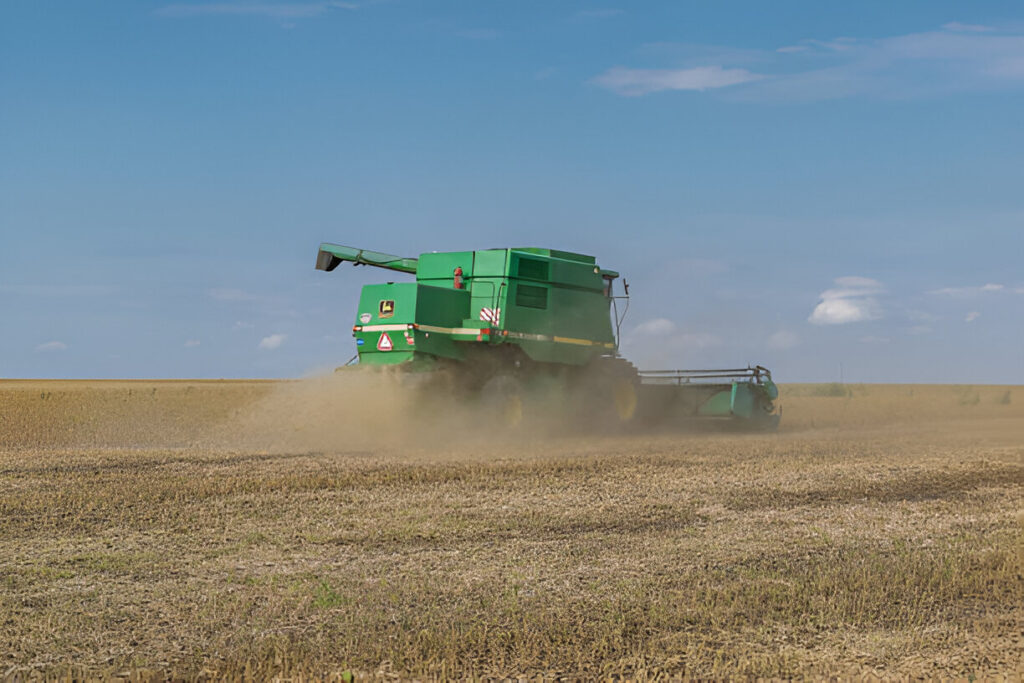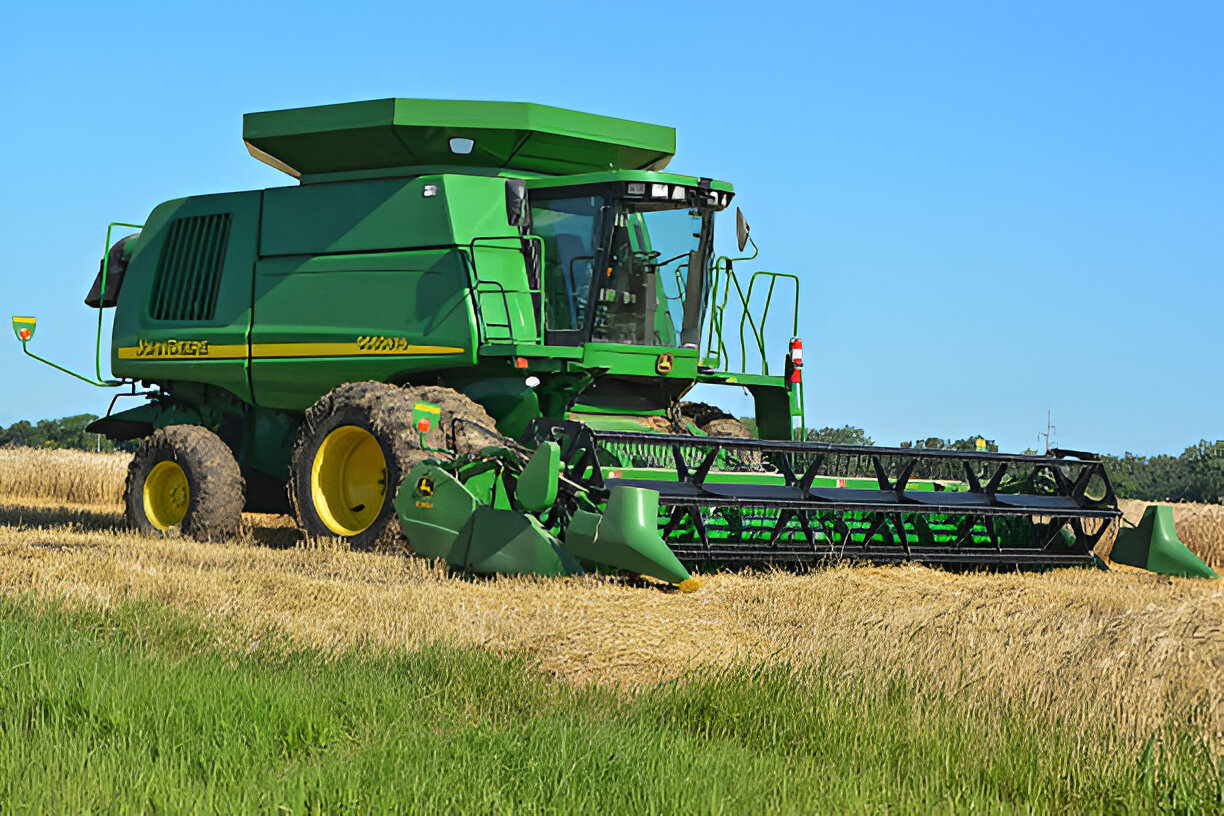The John Deere 9500 and John Deere 9600 combines are both popular machines in the agricultural industry, known for their reliability and efficient harvesting capabilities. When it comes to the concaves, which are part of the threshing and separation system, there are some important differences and nuances between the two models. Here’s a detailed comparison and explanation of the differences between the concaves used in the John Deere 9500 and the John Deere 9600:
Model and Generation Difference:
The John Deere 9500 is a part of the 9000 Series combine, introduced in the late 1980s and produced throughout the 1990s. It was designed as a mid-sized combine for general use.
The John Deere 9600, also part of the 9000 Series, is slightly larger and more powerful than the 9500, with a higher horsepower engine, making it more capable in terms of throughput and capacity. The 9600 typically came with a more advanced threshing and separation system.
Impact on Concave Design:
Since the 9600 is a more powerful machine, it has a larger rotor diameter and a more powerful threshing system compared to the 9500. This affects the concave’s dimensions and its role in the threshing process.
Concave Size and Configuration:
9500 Concaves:
The concaves used in the 9500 combine are typically narrower and less aggressive than those on the 9600. This makes them well-suited for handling a variety of crops like corn, soybeans, and small grains, with an emphasis on gentle threshing and good separation for the capacities of this model.
The concaves are typically round bar or large wire types depending on the desired threshing action.
9600 Concaves:
The concaves for the 9600 are generally wider and often designed with more aggressive wire options or fine wire for faster throughput and higher separation rates, handling more material at once due to the increased power of the machine.
The 9600 also utilizes heavy-duty concaves in certain configurations, especially for more challenging harvesting conditions (e.g., dense crop conditions, or crops that need more aggressive threshing like high-moisture corn).
Key Difference:
9500 concaves are designed to balance power and throughput for a medium-sized combine.
9600 concaves are designed for a larger capacity machine with greater horsepower, and are built to handle increased crop flow while maintaining separation efficiency.
Threshing Performance and Efficiency:

9500 Concaves:
These concaves offer a more gentle threshing action, which is ideal for crops that need delicate handling. They are designed to minimize seed damage while still providing effective threshing and separation. The concaves in the 9500 are tuned for a balance between power and gentle separation.
9600 Concaves:
With the more powerful rotor and increased capacity, the concaves on the 9600 are designed to provide higher throughput, meaning they can handle more crop material in a given period. These concaves are more aggressive, providing greater threshing force and are ideal for situations where large volumes of grain need to be processed rapidly.
The increased efficiency at high throughput, however, can sometimes result in more grain loss if not properly adjusted for the crop conditions.
Key Difference:
The 9500 offers more precise threshing for moderate crop loads and requires less power for operation.
The 9600 provides higher capacity for larger crops and higher volumes but may require more careful adjustment to avoid grain loss.
Adjustability and Flexibility:
9500 Concaves:
The 9500 features manual concave adjustment options, and while it may not have the same flexibility as newer combines, it can still be adjusted for different crops and conditions using mechanical settings.
9600 Concaves:
The 9600 also uses manual concave adjustments, but it can be outfitted with more advanced concave types such as specialized wire or round-bar concaves, which can be more easily swapped for different crop conditions or harvesting needs. This model may also offer additional options like variable concave adjustment systems in some configurations for greater ease of operation.
Key Difference:
Both combines have manual adjustment capabilities, but the 9600 has more options for concave configurations, which may make it more versatile in varying field conditions.
Crop Specific Performance:
9500 Concaves:
For corn, the 9500’s concaves are generally well-suited for lighter, less aggressive threshing. The standard concaves may be effective for soybeans, wheat, and oats, but may need specific adjustments or upgrades for crops that require more aggressive threshing.
9600 Concaves:
For corn, the 9600 can be fitted with more aggressive concaves, providing more capacity for large corn yields, especially in wet conditions or in high-yield fields. The concaves on the 9600 may be more suited to higher moisture content crops, and they can handle dense crop material without clogging or overloading the threshing system.
Key Difference:
The 9600 is more adaptable for high-capacity, high-moisture harvesting, while the 9500 is more tuned for general-purpose, moderate crop conditions.
Maintenance and Longevity:
9500 Concaves:
Maintenance for 9500 concaves is generally simpler due to their more straightforward design. They may experience less wear due to the less aggressive threshing action required for medium-sized crops.
9600 Concaves:
The more aggressive action and higher throughput of the 9600 can result in faster wear, especially in challenging harvesting conditions. Regular maintenance and periodic replacements of concaves or concave parts (like wire or bars) may be necessary to ensure optimal performance.
Key Difference:
9500 may require less frequent maintenance due to lighter use, while 9600 concaves may need more attention given the heavier demands placed on them.
Conclusion:
In summary, the concaves used in the John Deere 9500 and John Deere 9600 combine models are designed with the machine’s performance, capacity, and specific operational needs in mind.
The 9500 concaves are designed for moderate capacity harvesting, focusing on gentle threshing with a more conservative design for a variety of crops, making it ideal for smaller operations or less challenging conditions.
The 9600 concaves, on the other hand, are built for higher capacity and greater horsepower, providing a more aggressive threshing action to handle larger crop volumes and high-moisture conditions effectively. They allow for higher throughput but may require more frequent adjustments and maintenance.
Choosing between these two models depends largely on the scale of operation, type of crops, and the specific harvesting conditions you are dealing with. If you’re looking for more gentle threshing and lower maintenance, the 9500 may be more suitable. However, if you require a combine with higher capacity, faster throughput, and the ability to handle denser or wetter crops, the 9600 is the better option.

